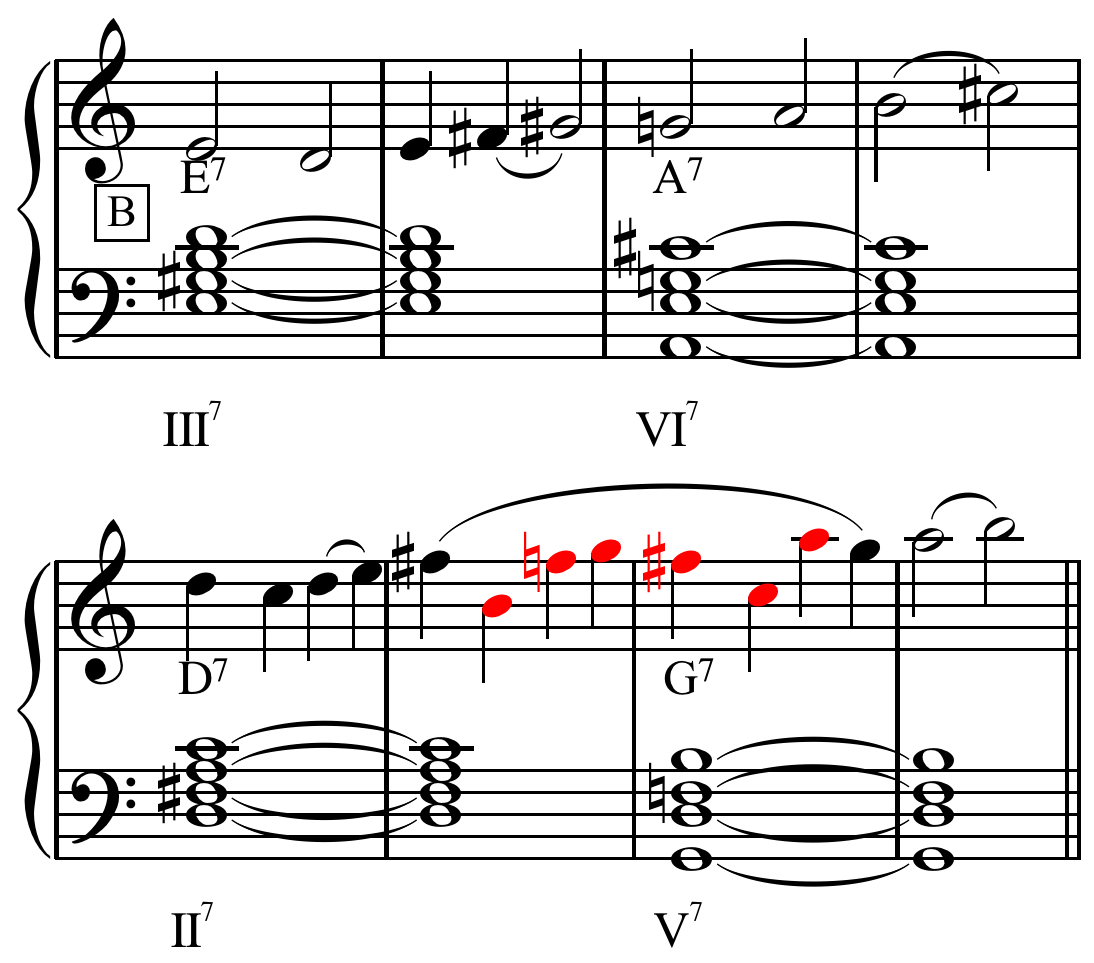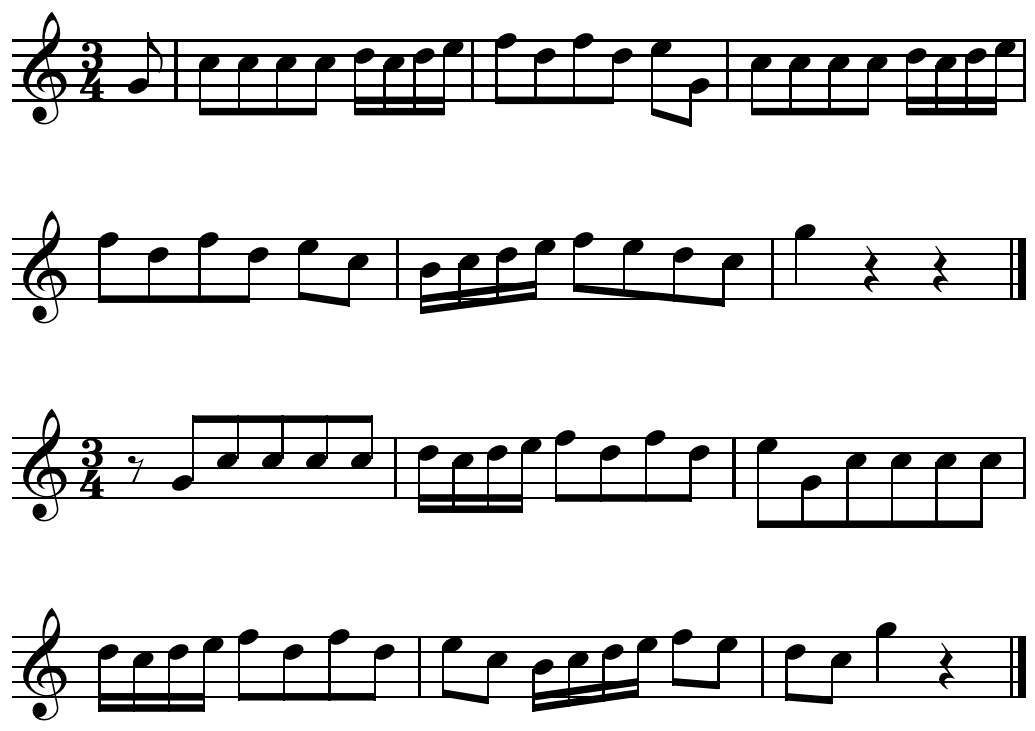Bar-line Shift on:
[Wikipedia]
[Google]
[Amazon]
 In
In  Outside of jazz a barline shift may be less than a bar, causing a change in the metric accent of the
Outside of jazz a barline shift may be less than a bar, causing a change in the metric accent of the
 In
In jazz
Jazz is a music genre that originated in the African-American communities of New Orleans, Louisiana in the late 19th and early 20th centuries, with its roots in blues and ragtime. Since the 1920s Jazz Age, it has been recognized as a major ...
, a bar-line shift is a technique in which, during improvisation
Improvisation is the activity of making or doing something not planned beforehand, using whatever can be found. Improvisation in the performing arts is a very spontaneous performance without specific or scripted preparation. The skills of impr ...
, one plays the chord from the measure
Measure may refer to:
* Measurement, the assignment of a number to a characteristic of an object or event
Law
* Ballot measure, proposed legislation in the United States
* Church of England Measure, legislation of the Church of England
* Mea ...
before or after the given chord either intentionally or as an "accident." Coker, Jerry (1997). ''Elements of the Jazz Language for the Developing Improvisor'', p.83. .
Bar-line shifts may be caused by a novice having lost their place in the chord progression
In a musical composition, a chord progression or harmonic progression (informally chord changes, used as a plural) is a succession of chords. Chord progressions are the foundation of harmony in Western musical tradition from the common practice ...
, but is most often attributable to: "(1)...harmonic generalization
In music theory, chord substitution is the technique of using a chord in place of another in a progression of chords, or a chord progression. Much of the European classical repertoire and the vast majority of blues, jazz and rock music songs a ...
, as in the case of playing a II to V7 (+5, +9) progression I-V-I turnaroundas only a V7 (+5, +9); or (2) the player ''wanted'' to play the previous chord (though it has already transpired), but was either pausing momentarily (as in taking a breath), and decides to adopt the 'better later than never' attitude." An example of a "very intentional" bar-line shift may be found on Cannonball Adderley's solo
Solo or SOLO may refer to:
Arts and entertainment Comics
* ''Solo'' (DC Comics), a DC comics series
* Solo, a 1996 mini-series from Dark Horse Comics
Characters
* Han Solo, a ''Star Wars'' character
* Jacen Solo, a Jedi in the non-canonical ''S ...
on "So What
So What may refer to:
Law
*Demurrer, colloquially called a "So what?" pleading
Music Albums
* ''So What'' (Anti-Nowhere League album) or the 1981 title song (see below), 2000
* '' So What?: Early Demos and Live Abuse'', by Anti-Nowhere League, ...
," "in which he deliberately enters and exits the bridge
A bridge is a structure built to span a physical obstacle (such as a body of water, valley, road, or rail) without blocking the way underneath. It is constructed for the purpose of providing passage over the obstacle, which is usually somethi ...
early, causing considerable tension
Tension may refer to:
Science
* Psychological stress
* Tension (physics), a force related to the stretching of an object (the opposite of compression)
* Tension (geology), a stress which stretches rocks in two opposite directions
* Voltage or el ...
, since the chord of the A section (D-) is one-half step lower than the chord of the bridge (E-)."
 Outside of jazz a barline shift may be less than a bar, causing a change in the metric accent of the
Outside of jazz a barline shift may be less than a bar, causing a change in the metric accent of the melody
A melody (from Greek language, Greek μελῳδία, ''melōidía'', "singing, chanting"), also tune, voice or line, is a Linearity#Music, linear succession of musical tones that the listener perceives as a single entity. In its most liter ...
and its cadence
In Western musical theory, a cadence (Latin ''cadentia'', "a falling") is the end of a phrase in which the melody or harmony creates a sense of full or partial resolution, especially in music of the 16th century onwards.Don Michael Randel (199 ...
.Newman, William S. (1995). ''Beethoven on Beethoven: Playing His Piano Music His Way'', p.170-71. .
See also
*Side-slipping
In jazz improvisation, outside playing describes an approach where one plays over a scale, mode or chord that is harmonically distant from the given chord. There are several common techniques to playing outside, that include side-stepping or ...
Sources